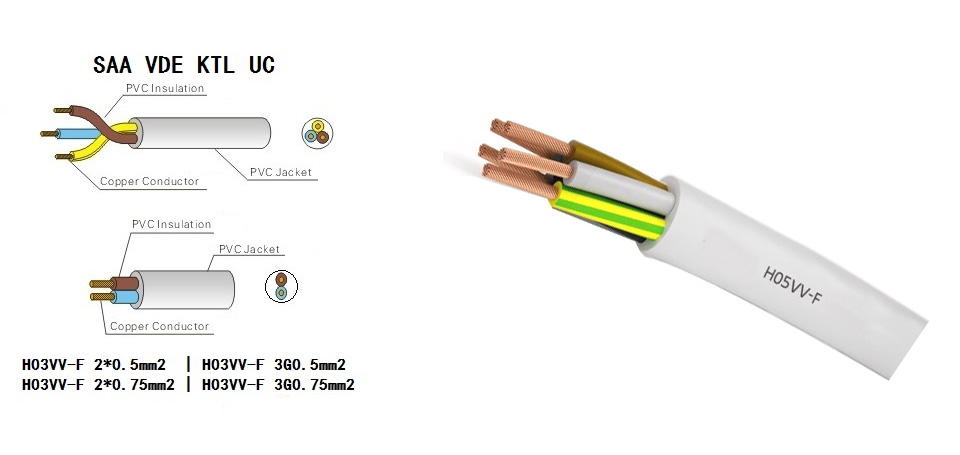Power cables are used to transmit and distribute electrical energy cables.In the power lines, the proportion of cable is gradually increasing. The power cable is a cable product used to transmit and distribute high-power power in the main line of the power system.

"Wire" and "cable" are not strictly bound. Usually less than the core number, the product diameter is small, the structure of a simple product called the wire, there is no insulation called bare wire, the other known as the cable; conductor cross-sectional area larger (more than 6 square millimeters) known as large wire, Small (less than or equal to 6 square millimeters) is called a small wire, insulated wire, also known as cloth wire.
The basic structure of the power cable consists of core (conductor), insulation layer, shielding layer and protective layer of four parts.
1. Core
The core is the conductive part of the power cable, used to transport power, is the main part of the power cable.
2.Insulation
Insulation layer is the core and the earth and the different phase of the core between the electrical isolation from each other to ensure that power transmission, power cable structure is an indispensable part.
3. Shield
15KV and above power cables generally have a conductor shield and insulation shield.
4. Protective layer
The role of the protective layer is to protect the power cable from external impurities and moisture intrusion, and to prevent external damage to the power cable.
In harmonized wire,there are usually 2-3 parts,the copper conductor,insulation and jacket.
a. H05VV series (H05VV-F; H05VV2-F); H07VV series (H05VV-F; H05VV-F);
b. High temperature PVC line: H03V2V2-F series; H05V2V2-F series; H07V2V2 series
c. Rubber line: H05RR-F (waterproof and anti-oil); H05RN-F (waterproof);
d. Light string dedicated line: indoor H03VH7-H
The "03" (300/300), "05" (300/500), "07" (450/750) refers to the voltage of the insulating material, which determines the thickness of the insulation; "H2" The PVC lines are generally used indoors, rubber lines for outdoor use. Each line of specifications has a different cross-sectional area
U - round, monofilar wire solid conductor(class 1.solid)
R - round multifilar wire(class 1.strand)
F - finely stranded for moving wiring (class 5)
"1 × 0.75mm2" means only one core, the root cross-sectional area of 0.75 mm2; "2 × 0.75mm2" means two 0.75 mm2 lines (0.50 mm2, 0.75mm2, 1.0mm2, 1.5mm2) ; "3 × 0.75mm2" means three 0.75mm2 cross-sectional areas of 0.75 mm2.
Let take “H03VVH2-F0.752/2C” for example:
H harmonized
03 300/300V
05 300/500V
07 450/750V
V: PVC insulation.
V: Jacket PVC.
H2: Flat Non-separate cable.
H: Flat Separate cable.
F: fine wire-flexible cord.
K: Extra-fine wire. (Class 5)
U: Solid. (Class 1)
R: Stranded (Class 2)
0.75MM2 Cross sectional size of conductors